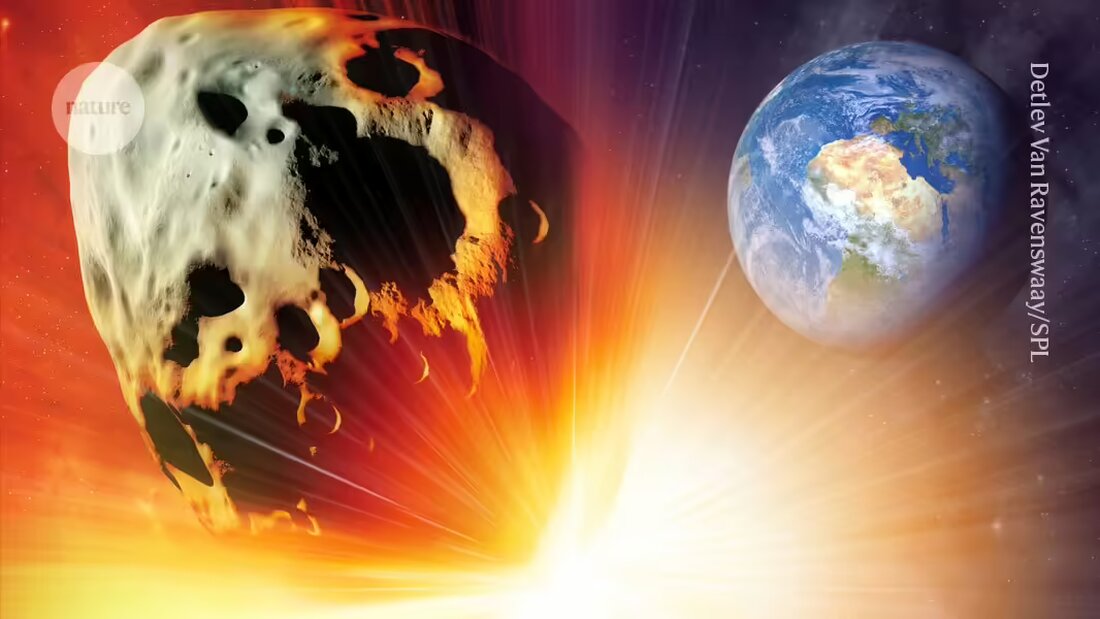Scientists simulate successful nuclear explosion of an asteroid in the laboratory
Scientists successfully simulated a nuclear deflection of asteroids in the laboratory to protect the Earth.

Scientists simulate successful nuclear explosion of an asteroid in the laboratory
A burst of X-rays from a nuclear explosion could be enough to protect Earth from an approaching asteroid. This emerges from the results of a first-time experiment.
The results, published September 23 in Nature Physics, show "truly stunning direct experimental evidence of how effective this technique can be," according to Dawn Graninger, a physicist at the Johns Hopkins University Applied Physics Laboratory in Laurel, Maryland. “It’s very impressive work.”
Nathan Moore, a physicist at Sandia National Laboratories in Albuquerque, New Mexico, and his team designed the experiment to simulate what might happen if a nuclear bomb was detonated near an asteroid. So far, scientists have studied the dynamics of a bomb's pressure wave, which is created by the expansion of gas and pushes against an asteroid. However, Moore and his team believe that the large amount of X-rays produced in the explosion could have a greater effect on changing an asteroid's trajectory.
The team used Sandia's enormous Z machine, which uses magnetic fields to generate high temperatures and powerful X-rays. They fired X-rays at two test asteroids that were about the size of coffee beans. “About 80 trillion watts of electricity flow through the machine for about 100 billionths of a second,” says Moore. “This intense electrical charge compresses argon gas into a very hot plasma with temperatures of millions of degrees, which creates a bubble of X-rays.”
The two test asteroids were about 12 millimeters in diameter and were made of quartz and silica gel to reflect different compositions of asteroids in the solar system. Each was suspended from a thin piece of foil in a vacuum. When the X-ray bubble hit, it cut the foil like scissors, sending the asteroids into free fall. This made it possible to observe the actual effect of the X-rays under conditions similar to the vacuum of space. “This is completely new,” says Graninger. “I’ve never heard of anything like this being done before.”
The results of the experiment, which lasted just 20 millionths of a second, showed that the quartz and silica samples accelerated to 69.5 meters per second and 70.3 meters per second before vaporizing. The cause of the acceleration was the X-rays that vaporized the surface of the asteroids, creating a thrust as the gas expanded from their surfaces.
Moore says the results show the technique could be scaled up to much larger asteroids, measuring about 4 kilometers across, to steer them away from a collision course with Earth. “We are particularly interested in the largest asteroids with a short warning time,” he says. In these cases, other approaches, such as ramming a spacecraft into an asteroid — as was done in NASA's Double Asteroid Redirection Test, or DART, in 2022 — "may not have enough energy to knock it off course."
Mary Burkey, a physicist at Lawrence Livermore National Laboratory in Livermore, California, describes the study as "one of the first major blockbuster publications trying to figure out how we on Earth can recreate a nuclear deflection of an asteroid." She highlights that other experiments are exploring the possibility, including those that use meteorite samples to more accurately simulate the composition of asteroids. “Planetary protection has a lot more time in the spotlight,” she says.
Moore hopes to conduct further experimental testing of the X-ray deflection technique to refine its effectiveness. One day there could also be a test in space, similar to the DART mission, to observe the effect on a real asteroid. “There is nothing stopping us except the will to do it,” he says.
-
Moore, N.W. et al. Nature Phys. https://doi.org/10.1038/s41567-024-02633-7 (2024).

 Suche
Suche
 Mein Konto
Mein Konto
